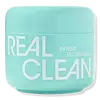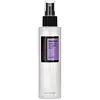What's inside
What's inside
 Key Ingredients
Key Ingredients

 Benefits
Benefits

 Concerns
Concerns

 Ingredients Side-by-side
Ingredients Side-by-side

Ethylhexyl Palmitate
EmollientCaprylic/Capric Triglyceride
MaskingPEG-20 Glyceryl Triisostearate
EmollientSynthetic Wax
AbrasiveButylene Glycol
HumectantWater
Skin ConditioningPhenoxyethanol
PreservativeEthylhexylglycerin
Skin ConditioningCocos Nucifera Oil
MaskingSodium Hyaluronate
HumectantCeramide NP
Skin ConditioningHydrogenated Lecithin
EmulsifyingPolyglyceryl-10 Stearate
Skin ConditioningSucrose Stearate
EmollientHydroxypinacolone Retinoate
Skin ConditioningDimethyl Isosorbide
SolventParfum
MaskingCitric Acid
BufferingHexyl Cinnamal
PerfumingCoumarin
PerfumingEthylhexyl Palmitate, Caprylic/Capric Triglyceride, PEG-20 Glyceryl Triisostearate, Synthetic Wax, Butylene Glycol, Water, Phenoxyethanol, Ethylhexylglycerin, Cocos Nucifera Oil, Sodium Hyaluronate, Ceramide NP, Hydrogenated Lecithin, Polyglyceryl-10 Stearate, Sucrose Stearate, Hydroxypinacolone Retinoate, Dimethyl Isosorbide, Parfum, Citric Acid, Hexyl Cinnamal, Coumarin
 Reviews
Reviews

Ingredients Explained
These ingredients are found in both products.
Ingredients higher up in an ingredient list are typically present in a larger amount.
Butylene Glycol (or BG) is used within cosmetic products for a few different reasons:
Overall, Butylene Glycol is a safe and well-rounded ingredient that works well with other ingredients.
Though this ingredient works well with most skin types, some people with sensitive skin may experience a reaction such as allergic rashes, closed comedones, or itchiness.
Learn more about Butylene GlycolWater. It's the most common cosmetic ingredient of all. You'll usually see it at the top of ingredient lists, meaning that it makes up the largest part of the product.
So why is it so popular? Water most often acts as a solvent - this means that it helps dissolve other ingredients into the formulation.
You'll also recognize water as that liquid we all need to stay alive. If you see this, drink a glass of water. Stay hydrated!
Learn more about Water